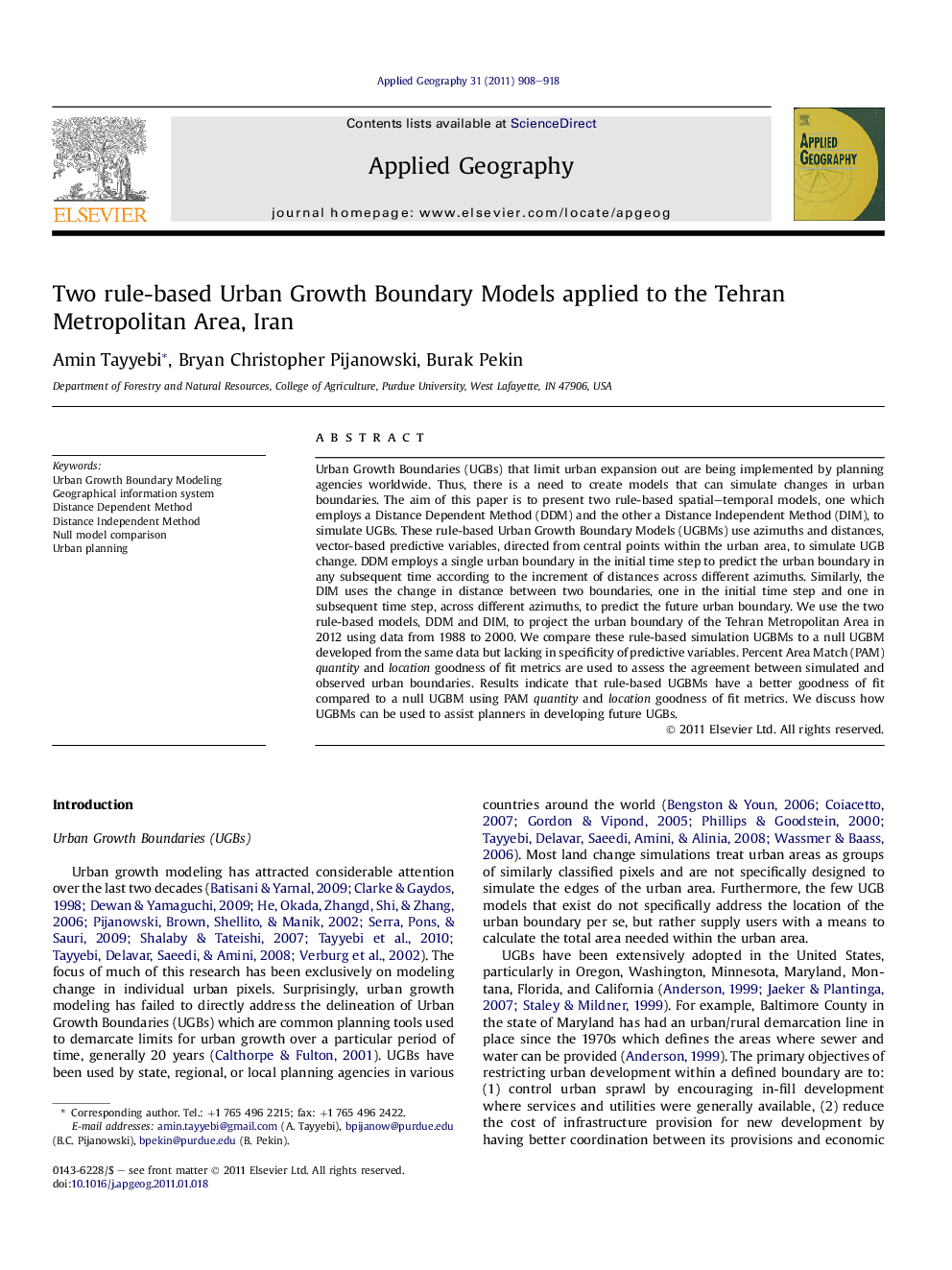| کد مقاله | کد نشریه | سال انتشار | مقاله انگلیسی | نسخه تمام متن |
|---|---|---|---|---|
| 83619 | 158728 | 2011 | 11 صفحه PDF | دانلود رایگان |

Urban Growth Boundaries (UGBs) that limit urban expansion out are being implemented by planning agencies worldwide. Thus, there is a need to create models that can simulate changes in urban boundaries. The aim of this paper is to present two rule-based spatial–temporal models, one which employs a Distance Dependent Method (DDM) and the other a Distance Independent Method (DIM), to simulate UGBs. These rule-based Urban Growth Boundary Models (UGBMs) use azimuths and distances, vector-based predictive variables, directed from central points within the urban area, to simulate UGB change. DDM employs a single urban boundary in the initial time step to predict the urban boundary in any subsequent time according to the increment of distances across different azimuths. Similarly, the DIM uses the change in distance between two boundaries, one in the initial time step and one in subsequent time step, across different azimuths, to predict the future urban boundary. We use the two rule-based models, DDM and DIM, to project the urban boundary of the Tehran Metropolitan Area in 2012 using data from 1988 to 2000. We compare these rule-based simulation UGBMs to a null UGBM developed from the same data but lacking in specificity of predictive variables. Percent Area Match (PAM) quantity and location goodness of fit metrics are used to assess the agreement between simulated and observed urban boundaries. Results indicate that rule-based UGBMs have a better goodness of fit compared to a null UGBM using PAM quantity and location goodness of fit metrics. We discuss how UGBMs can be used to assist planners in developing future UGBs.
► Rule-based Models more accurately simulate urban boundary than a Null model.
► Distance Independent Method most accurately projects location of urban boundary.
► Distance Dependent Method is more accurate for predicting total change in urban area.
► A variety of goodness of fit are presented to evaluate our UGBMs.
Journal: Applied Geography - Volume 31, Issue 3, July 2011, Pages 908–918